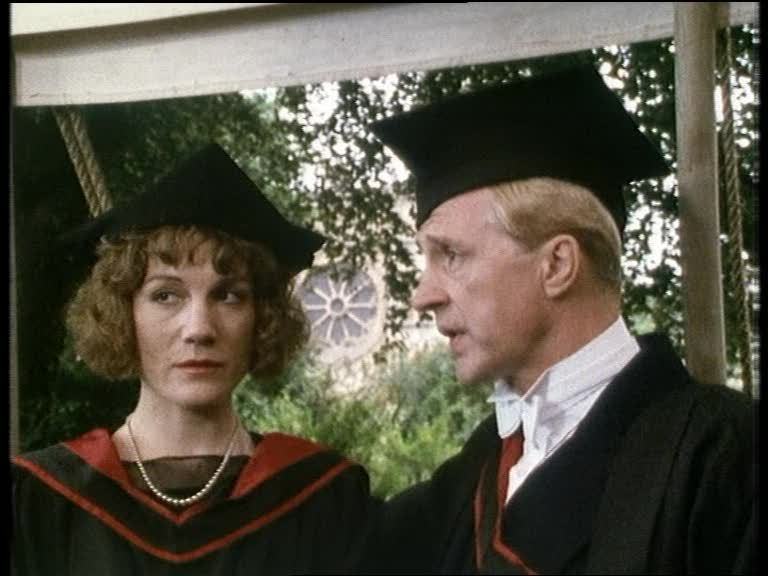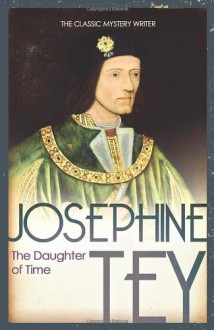
As I just finished the last book of Josephine Tey's Inspector Grant series (and have also read both of her nonseries mysteries, Brat Farrar and Miss Pym Disposes), it occurred to me that there is a third "series reading" master post I should keep, in addition to the First in Series and Ongoing Series posts that I created a while ago, as inspired by Moonlight Reader; namely, one to collect all my completed reading. So this post collects everything from books / series recently finished to those that I read a long time ago in a galaxy much further away than I care to think about: in the latter case, if fiction, I can't guarantee that I remember much about the plot or the characters (which just might mean that it's time for a reread, but that's a different matter); if nonfiction, whatever I remember of their contents has long merged into the general muddle of information about our world, past and present, that has passed through my brain over the years, mostly without taking permanent residence and definitely without me still being able to pinpoint any specific source. But so help me, I did read all of these -- some only once, some have become favorite comfort reads.
I'll only be collecting completed series or other similarly definable groups of books here (e.g., "all novels / short stories by ..."); beginning with actually completed books and concluding with a section listing the series I have abandoned. This is not intended as a master post listing all of my completed reading.
COMPLETED
MYSTERIES
Dermot Bolger
- Finbar's Hotel (ed.)
G.K. Chesterton
- Father Brown
Agatha Christie
- all mystery novels and short stories:
- Miss Marple
- Poirot
- Tommy & Tuppence
- Superintendent Battle (incl. Bundle Brent)
- Colonel Race
- Parker Pyne
- Qin & Satterthwaite
- Nonseries mysteries
Arthur Conan Doyle
- Sherlock Holmes
Michael Connelly
- Terry McCaleb
The Detection Club
- The Floating Admiral
Colin Dexter
- Inspector Morse
J. Jefferson Farjeon
- Inspector Kendall
Caroline Graham
- Midsomer Murders
George Heyer
- All mysteries:
- Inspector Hannasyde
- Inspector Hemingway
- Nonseries
Tony Hillerman
- Leaphorn & Chee
P.D. James
- Adam Dalgliesh
- Cordelia Gray
Stephen King
- The Green Mile
Stieg Larsson
- Millennium (original series)
Dennis Lehane
- Kenzie & Gennaro
Henning Mankell
- Wallander
Ngaio Marsh
- Roderick Alleyn
Denise Mina
- Garnethill Trilogy
George Pelecanos
- Derek Strange & Terry Quinn
Catherine Louisa Pirkis
- Loveday Brooke
Edgar Allan Poe
- Dupin Tales
Ian Rankin
- Jack Harvey Thrillers
Dorothy L. Sayers
- Lord Peter Wimsey (incl. Wimsey & Vane subseries)
Josephine Tey
- All mysteries:
- Inspector Grant series
- Nonseries mysteries (Brat Farrar & Miss Pym Disposes)

HISTORICAL FICTION (ICNL. HISTORICAL MYSTERIES)
Robert van Gulik
- Judge Dee
Anthony Horowitz
- Sherlock Holmes sequels
John Jakes
- North and South Trilogy
Patrick O'Brian
- Aubrey & Maturin
Ellis Peters
- Brother Cadfael
David Pirie
- The Dark Beginnings of Sherlock Holmes
Jean Plaidy
- Mary Stuart
Tony Riches
- Tudor Trilogy

FANTASY / FAIRY TALES / SUPERNATURAL
Hans Christian Andersen
- Complete Fairy Tales
Brothers Grimm
- Complete Fairy Tales
Wilhelm Hauff
- Complete Fairy Tales
C.S. Lewis
- Chronicles of Narnia
Tamora Pierce
- Song of the Lioness
J.K. Rowling
- Harry Potter (minus The Cursed Child, which contrary to the sales hype wasn't actually written by Rowling)
J.R.R. Tolkien
- Middle Earth: The Hobbit & The Lord of the Rings
T.H. White
- The Once and Future King
Tad Williams
- Memory, Sorrow & Thorn

CLASSICS & LITFIC
Aeschylus
- Oresteia (Agamemnon / The Libarion Bearers / The Eumenides)
Louisa May Alcott
- Little Women (incl. Good Wives, Little Men & Jo's Boys)
Margaret Atwood
- Gilead (The Handmaid's Tale & The Testaments)
Jane Austen
- Novels and fragments (minus juvenalia, except for The History of England)
Gabriel Chevalier
- Clochemerle (Clochemerle & Clochemerle Babylon)
Johann Wolfgang von Goethe
- Faust (Parts I & II and Urfaust)
Lewis Grassic Gibbon
- A Scots Quair
Robert Graves
- I, Claudius
- Books on Greek mythology (The Greek Myths; Greek Gods and Heroes)
Selma Lagerlöf
- Jerusalem
D.H. Lawrence
- Brangwen Family (The Rainbow & Women in Love)
Naguib Mahfouz
- Cairo Trilogy
- Novels & stories of Ancient Egypt (Khufu's Wisdom, Rhadopis of Nubia, Thebes at War, Akhenaten, Voices from the Other World)
Thomas Mann
- All novels and short stories
Edna O'Brien
- Country Girls Trilogy
William Shakespeare
- All plays, sonnets and short poems
Sophocles
- Theban Plays (Oedipus Rex, Oedipus at Colonnus, Antigone)
Wallace Stegner
- Joe Allston (All the Little Live Things & The Spectator Bird)
Anthony Trollope
- The Pallisers

HISTORY, (AUTO)BIOGRAPHY & OTHER NONFICTION
Will & Ariel Durant
- The Story of Civilization
Fischer Weltgeschichte
(various authors; elsewhere known as Universal History and Storia Unversale)
Antonia Fraser
- A Royal History of England (ed.)
Hugo Hamilton
- Childhood Memoirs
Hans J. Massaquoi
- Destine to Witness
Hans Silvester
- Cats in the Sun

ABANDONED
SERIES
Renée Ahdieh: The Wrath and the Dawn (after book 1, The Wrath and the Dawn)
Alan Bradley: Flavia de Luce (after book 1, The Sweetness at the Bottom of the Pie)
Dan Brown: Robert Langdon (after book 2, The Da Vinci Code; no other books from series read)
Miles Burton: Desmond Merrion (after book 1, The Secret of High Eldersham)
Trudi Canavan: Black Magician Trilogy (after book 1, The Magicians' Guild)
Zen Cho: Sorcerer to the Crown (after book 1, Sorcerer to the Crown)
Jennifer Estep: Crown of Shards (after book 1, Kill the Queen)
Helen Fielding: Bridget Jones's Diary (after book 1, Bridget Jones's Diary)
James Forrester: Clarenceux Trilogy (after book 1, Sacred Treason)
Elizabeth George: Inspector Lynley (after book 16, This Body of Death)
Lee Goldberg: Even Ronin (after book 1, Lost Hills)
Kerry Greenwood: Phryne Fischer (after book 1, Cocaine Blues, aka Miss Phryne Fisher Investigates)
Philippa Gregory: Tudor Court (after book 3, The Other Boleyn Girl; no other books from series read)
L.B. Hathaway: Posie Parker (DNF book 6.5, A Christmas Case; no other books from series read)
Martha Grimes: Richard Jury (after book 21, Dust)
Dorothy B. Hughes: Griselda Satterlee (after book 1, The So Blue Marble)
E.L. James: Fifty Shades (after book 1, Fifty Shades of Grey)
Carole Lawrence: Ian Hamilton (after book 1, Edinburgh Twilight)
Edward Marston: Christopher Redmayne (after book 1, The King's Evil)
Francine Matthews: Caroline Carmichael (after book 1, The Cutout)
Pat McIntosh: Gil Cunningham (after book 1, The Harper's Quine)
Stephenie Meyer: Twilight (after book 1, Twilight)
S.J. Parris: Giordano Bruno (after book 1, Heresy)
Louise Penny: Armand Gamache (after book 1, Still Life)
Elizabeth Peters: Amelia Peabody (after book 1, Crocodile on the Sandbank)
Valerie Plame Wilson & Sarah Lovett: Vanessa Pierson (after book 1, Blowback)
Patrick Senécal: Le vide (after book 1, Vivre au Max)
Helene Tursten: Inspector Irene Huss (after book 2, Night Rounds)
AUTHORS
Anne Rice
Read:
- Maifair Witches through book 2 (Lasher)
- Vampire Chronicles through book 6 (The Vampire Armand)
- Stand-alones: Cry to Heaven, Violin, Vittorio the Vampire


 Log in with Facebook
Log in with Facebook 




















 Tower of London: The round building center/left is the Bloody Tower, where King Edward IV's sons, today known simply as "the Princes in the Tower," are believed to have been held.
Tower of London: The round building center/left is the Bloody Tower, where King Edward IV's sons, today known simply as "the Princes in the Tower," are believed to have been held.








